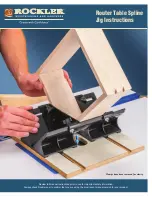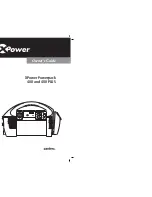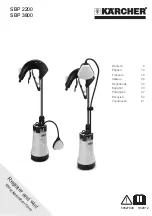
10 • ENGLISH
and ensure that persons within or entering the work area
are also protected.
f
This tool is not intended for use by persons (including
children) with reduced physical, sensory or metal
capabilities, or lack of experience and knowledge,
unless they have been given supervision or instruction
concerning use of the appliance by a person
responsible for their safety. Children should be
supervised to ensure that they do not play with the
appliance.
f
The intended use is described in this instruction
manual. Yhe use of any accessory or attachment
or performance of any operation with this tool other
than those recommended in this instruction manual
may present a risk of personal injury and/or damage
to property.
OPERATION
¡Warning! Before attempting any of the following
aperations, make sure that the tool is switched off and
unplugged and that the saw blade has stopped. Used saw
blades can be hot. The tool always is supplied via residual
current device with a rated residual current of 30 mA or
less.
BLADE INSTALLATION (FIG. B)
f
Push the saw blade locking lever (3) upward.
f
With teeth facing forward, insert the shank of the saw
blade into the blade holder as far as it will go.
f
Release the lever.
f
Check to ensure blade is secure before cutting.
ADJUSTING THE SHOE FOR BEVEL CUTS (FIG. C)
¡Warning! Never use the tool when the shoe is loose or
removed. The shoe plate can be set to a left or right bevel
angle of up to 45º.
To set the bevel angle:
f
Pull the shoe beveling lever (7) out and away from the
saw to unlock the shoe (6) as shown in Fig.C.
f
Slide the shoe forward to release it from the 0º
positive stop position.
f
The shoe can be beveled to the left or to the rightand
has detents at 15º, 30º and 45º.
f
Set the shoe to the desired bevel angle, Use a
protractor to verify angle accuracy.
f
Push the shoe beveling lever back towards the saw to
lock the shoe.
To reset the shoe for straight cuts:
f
Pull the shoe beveling lever (7) out and away from the
saw to unlock the shoe (6) as shown in Fig.C.
f
Rotate shoe to an angle of approximately 0º and then
pull shoe backwards to engage the 0º positive stop.
f
Push the shoe beveling lever back towards the saw to
lock the shoe
SWITCHING ON AND OFF
f
To switch the tool on, squeeze the trigger switch (1).
f
For continuous operation, squeeze the trigger switch
then depress the lock-on button (2). Once lock-on
button is depressed, release the trigger switch.
f
To switch the tool off, release the trigger switch. To
switch the tool off, when in continuous operation,
squeeze the trigger and the lock will disengage.
VARIABLE SPEED CONTROL (FIG. D)
A speed control wheel (8) is located on the top of the saw.
The speed increases as the wheel is turned from a low
speed setting of 1 to a high speed setting of 7.
CUTTING ACTION - ORBITAL OR STRAIGHT (FIG. E)
¡Warning! Check that the tool is not locked ON before
connecting it to a power supply. If the trigger switch is
locked ON when the tool is connected to the power supply,
it will start immediately. Damage to your tool or personal
injury may result.
This jig saw is equipped with four cutting actions, three
orbital and one straight. Orbital action has a more
aggressive blade motion and is designed for cutting in soft
materials like wood or plastic. Orbital action provides a
faster cut, but with a less smooth cut across the material.
In orbital action, the blade moves forward during the
cutting stroke in addition to the up and down motion.
Note: Metal or hardwoods should never be cut in orbital
action.
To adjust the cutting actions:
f
Move the cutting action lever (9) between the four
cutting positions: 0, 1, 2 and 3.
f
Position 0 is straight cutting.
f
Positions 1, 2, and 3 are orbital cutting.
f
The aggressiveness of the cut increases as the lever
is adjusted from one to three, with three being the
most aggressive cut.
LED LIGHT
The jig saw is equipped with a light which projects on the
cutting path.
f
The light will come on when the trigger switch is
depressed and will go off when the trigger switch is
released.
REMOVABLE SHOE SLEEVE (FIG. F)
the non-marring shoe sleeve (5) should be used when
cutting surface that scartch easily, such as laminate,
veneer, or paint. It can also be used to protect the shoe
surface during transportation and storage.
To attach shoe sleeve, place the front of the shoe (6) into
the front of the shoe sleeve (5) and lower the jig saw as






























